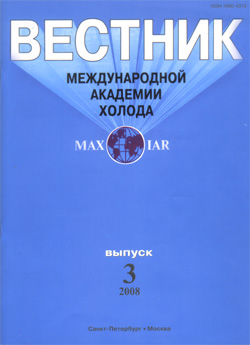
Technological features of the yeast puff pastry made from creamery butter

Annotation
The technological features of the use creamery butter in the manufacture of yeast puff pastry depending on the season of milk production are considered. The relevance of the chosen topic is due to the trends in the transition of bakeries from the use of margarine to the use of butter in confectionery and bakery products. This transition is associated with an increase in consumer demand for food products, in the manufacturing process of which hydrogenated fats, flavors, colorants and other food additives are not used. As an object of research, New Zealand butter was selected, which is identified as grass-fed one.This term means that the butter is made from the milk of cows being most of the time on free pasture and eating fresh grass. It has been studied that New Zealand butter has several advantages: high content of natural β-carotene, vitamins D, K2, and E; pure creamy taste, and aroma. During research the authors investigated the technological properties of the product on the example of the manufacture of yeast puff products.During the study, the dependence of the technological properties of New Zealand butter made from August to January on the profile of fatty acids, thermal stability, solid fat content, and β-carotene content was studied; as well as their influence on the organoleptic characteristics of finished yeast puff products. It was found out that butter made between August and October is more plastic and soft, it requires a decrease in the operating temperature of the butter by 2-4 °C, in contrast to the butter of the November-January season. Recommendations on the technological conditions for the manufacture of yeast puff products are formulated.
Keywords
Постоянный URL
Articles in current issue
- The influence of the equivalent sand roughness of compressor impeller on the characteristics of centrifugal compressor low-emission stage a numerical analysis
- Efficiency of the thermodynamic cycle of absorption lithium bromide refrigerating unit with two-stage absorption and three-stage generation of the refrigerant vapor with bound mass flow
- Boundaries of thermoacoustic instability in the thermoacoustic engine with cryogenic cooling
- Structural and technological diagram of a nitrogen cooling system of liquefied methane for refueling a medium-class launch vehicle
- Decentralized air conditioning systems
- Hygroscopic properties of water-soluble anthocyanin complexes isolated from fruit and berry raw materials
- Analysis of temperature field for starch or pectin-containing raw materials under controlled thermal effect
- Microbilogocal aspects of safety for the biotechnology of the Carotinka cream fondant
- Method of optical-electrochemical biotesting in assessment of antibiotic properties of various essential oils
- Technological features of the yeast puff pastry made from creamery butter
- Mathematic modelling cryolithozone formation in waterlogged soils
- Experimental studies on the intensity of heat transfer in organic viscous media
